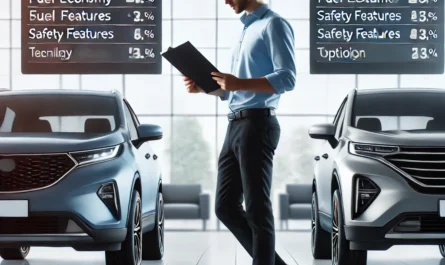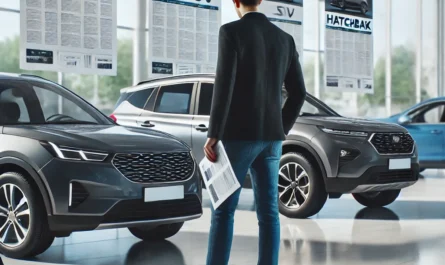When you’re in the market for a new car, you’ll quickly discover that car models come in various trims and variants. These different trim levels offer a range of features, performance upgrades, and price points, but understanding what each trim includes and how they differ can be confusing. Choosing the right trim level can significantly affect your driving experience, your vehicle’s value, and how much you end up spending both upfront and long-term.
In this guide, we’ll break down everything you need to know about car trims and variants, from understanding the basics to making the best choice for your needs and budget.
What Are Car Trims and Variants?
At its core, a car trim refers to different versions of a car model, each offering a unique set of features and equipment. Variants may include different engine options, interior finishes, technology packages, and safety features. The base trim typically offers the most affordable version of a car, while higher trims include more advanced features, better materials, and sometimes performance enhancements.
For example, a manufacturer might offer a base model with standard cloth seats and minimal tech, while a higher-end trim of the same model could include leather upholstery, a larger touchscreen, and premium audio systems.
Base Model vs. Higher Trim Levels: What’s the Difference?
The biggest differences between a base model and a higher trim level often come down to comfort, technology, and performance upgrades. Here’s a breakdown of some key differences you might find:
- Interior Features: Higher trims might offer upgraded materials such as leather or faux leather seats, heated seating, a more advanced infotainment system, and additional convenience features like wireless charging.
- Exterior Design: Base models tend to have simpler designs with standard wheels and lighting. Higher trims often come with alloy wheels, LED lighting, and sportier body kits.
- Performance: While base models typically come with standard engines, higher trims may offer more powerful engine options, all-wheel drive, or sport-tuned suspensions for better handling and acceleration.
- Technology: Advanced driver assistance systems, larger touchscreens, and upgraded sound systems are often exclusive to higher trim levels.
Popular Trim Names Across Different Brands
Car manufacturers often use specific names to denote trim levels, though these names can vary from brand to brand. Here are some common trim level designations you’ll come across:
- Honda: LX, EX, Touring
- Toyota: L, LE, XLE, Limited
- Ford: SE, SEL, Titanium
- Chevrolet: LS, LT, Premier
- BMW: 330i, 340i, M340i (the numbers often indicate engine size and power)
Understanding these designations helps you quickly identify the features and price range associated with each trim.
Interior Features That Change with Trim Levels
One of the most noticeable differences between car trims is the interior experience. Higher trims typically offer:
- Premium Upholstery: Upgraded trims may feature leather seats, contrast stitching, and ventilated or heated seats, offering more comfort and style than the base model’s cloth or synthetic leather.
- Technology: Base models might come with a small touchscreen and basic sound system, while higher trims include larger displays, satellite navigation, and premium audio systems like Bose or Bang & Olufsen.
- Convenience Features: Features like a power liftgate, remote start, and keyless entry are often reserved for higher trims.
Exterior Differences Between Car Trims
The exterior appearance of a car can also change significantly with trim levels:
- Wheels: Higher trims typically offer larger alloy wheels, sometimes in unique designs. The base model may come with steel wheels or smaller alloy options.
- Lighting: LED headlights and fog lights might be standard on higher trims, while base models often come with halogen lights.
- Sunroof: A panoramic or power sunroof might be available only in higher trims.
Performance and Engine Options Across Trims
While base models usually come with a standard engine, higher trims might offer more powerful engine choices, enhanced transmission options, or additional performance packages. For example, a base trim might come with a four-cylinder engine, while a higher trim could offer a turbocharged V6 for better acceleration and towing capacity.
Some brands also offer sport-tuned versions, like Ford’s ST or Honda’s Sport trims, which include performance enhancements such as upgraded brakes, suspension, and steering.
How Trim Levels Impact Safety Features
Many base models include basic safety features like airbags, anti-lock brakes, and traction control. However, higher trims often offer advanced safety technologies that are either unavailable or optional on lower trims, such as:
- Adaptive Cruise Control
- Lane-Keeping Assist
- Blind Spot Monitoring
- Automatic Emergency Braking
These features may only be available on top-tier trims or bundled in optional packages.
Fuel Efficiency Differences Between Trims
The fuel efficiency of a car can vary depending on the trim level, particularly when more powerful engines or performance features are involved. A higher trim with a bigger engine may sacrifice a few miles per gallon for added power, while a lower trim is likely to offer better fuel economy.
For instance, a base model might have a fuel-efficient 2.0L engine, while the sporty variant of the same car, equipped with a 3.5L turbocharged engine, could consume more fuel.
Tech and Infotainment Features by Trim
Base models often come with standard tech, like a small touchscreen and Bluetooth connectivity. But when you step up to higher trims, you can expect:
- Larger Infotainment Displays: A jump from a 7-inch screen in the base trim to a 10-inch or larger screen in the premium version.
- Advanced Connectivity: Apple CarPlay, Android Auto, and wireless charging are often standard on higher trims.
- Upgraded Audio Systems: Brands like Audi, Lexus, and Mercedes-Benz offer premium sound systems from companies like Bang & Olufsen or Burmester in their upper trims.
You can also read: Top 10 Latest Car Models to Watch Out for in 2024
How to Choose the Right Trim for Your Needs
Choosing the right trim level comes down to understanding your needs and budget. If you prioritize comfort, convenience, and tech, opting for a mid or high-level trim could be worth the extra cost. If you’re budget-conscious and don’t need all the bells and whistles, a base or entry-level trim may suit you perfectly.
In the next sections, we’ll explore special edition trims, how trims impact resale value, and how to customize your chosen trim level for a personalized experience.



